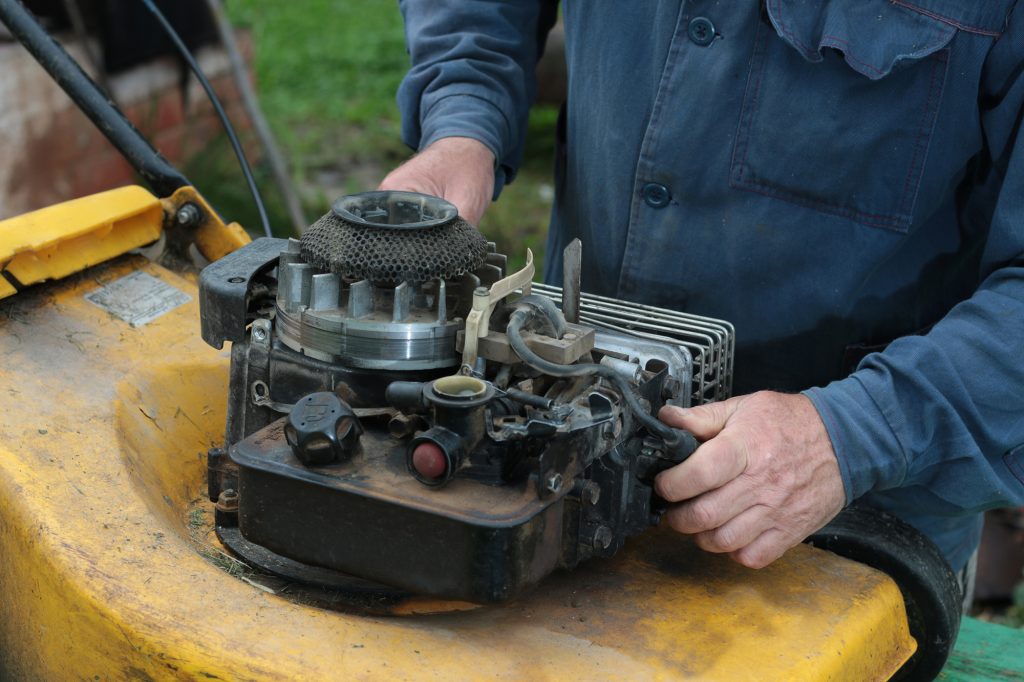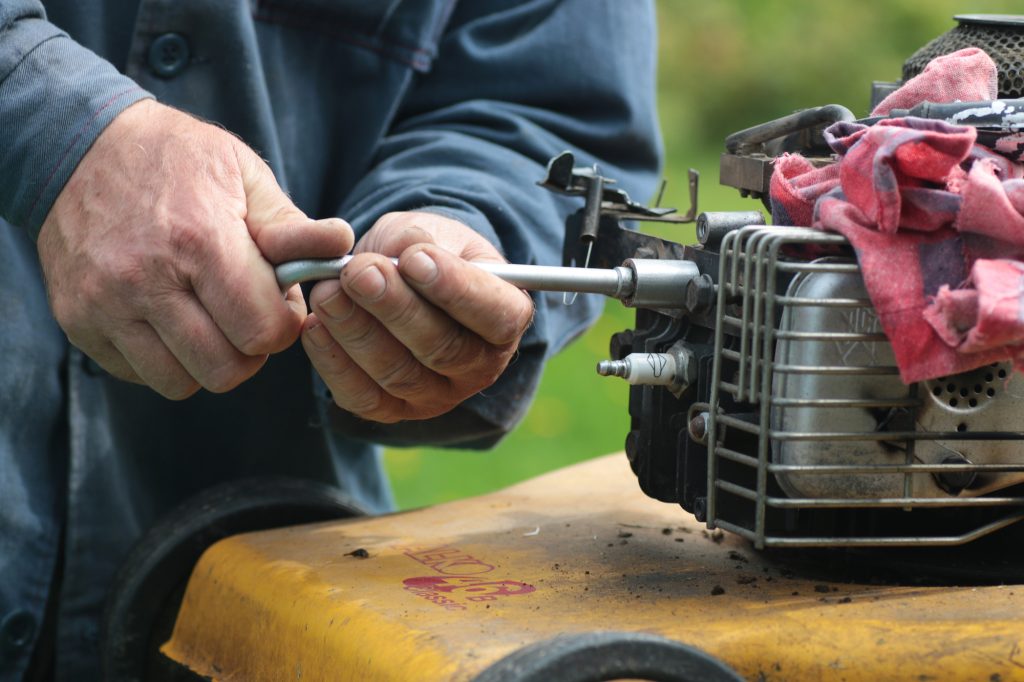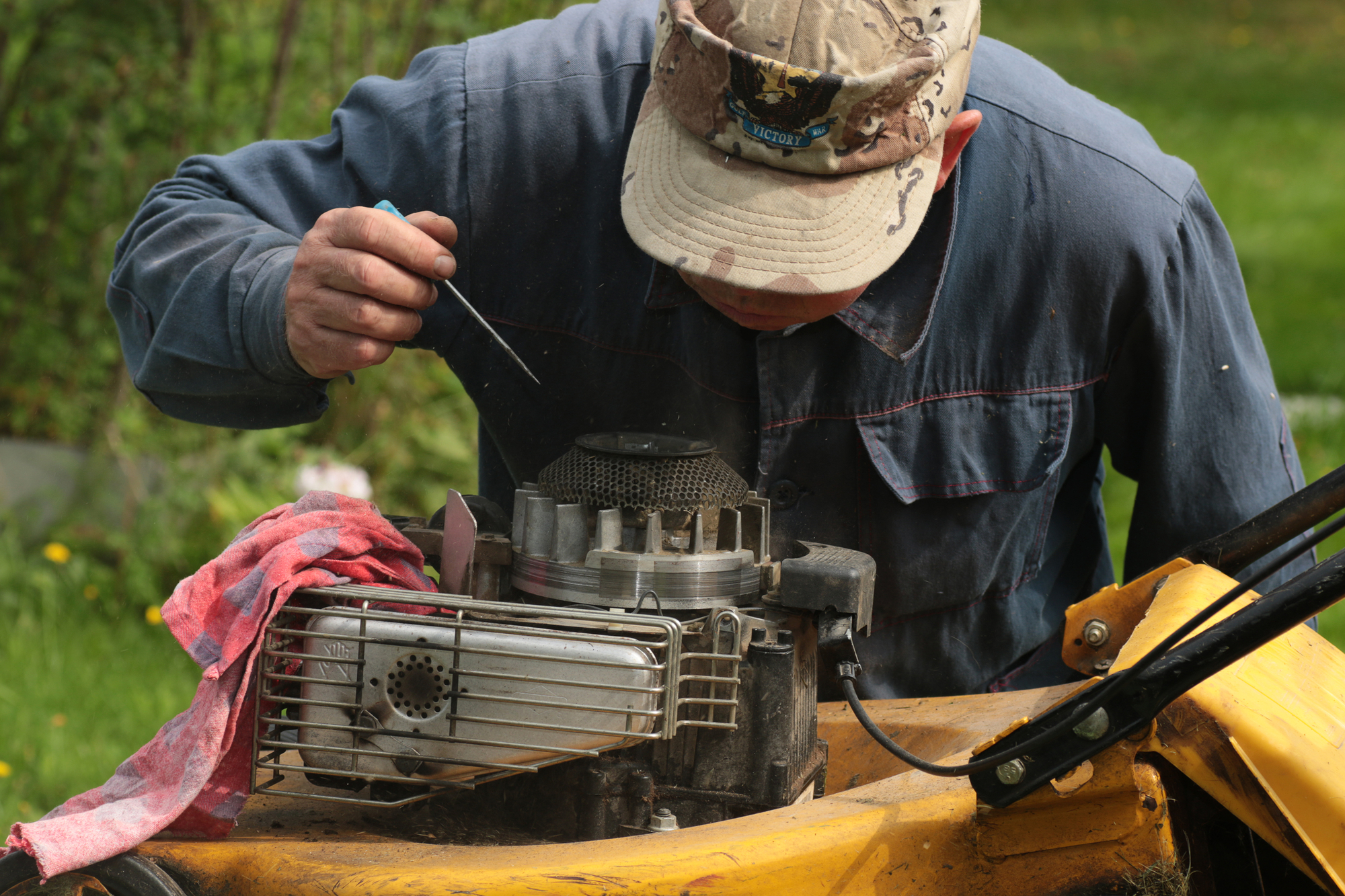Whether you have a simple push lawn mower or a sophisticated ride-on-lawn mower, knowing how to fix a faulty lawn mower fuel pump can save you time and money. So, when you have a faulty fuel pump, how do you fix it?
Fixing a faulty lawn mower fuel pump may require replacing attached hoses, the fuel filter, fuel pump, or its attached or inner components.
In this content you’ll learn:
The Importance Of A Lawn Mower Fuel Pump
The fuel pump is an essential component without which your lawn mower will not run. Some lawn mowers don’t have a fuel pump and rely on gravity to feed fuel from the gas tank to the carburetor. However, with modern designs, the fuel tank is often at or below the height of the carburetor, so the fuel must be pumped from the fuel tank.
The fuel pump draws fuel from the fuel tank by creating suction in the attached fuel hose. Once the fuel enters the pump, the diaphragm sucks it through the pump body and pushes it toward the carburetor. Once the fuel reaches the carburetor, it enters the float chamber from where it is sucked into the carburetor throat, mixes with air, and enters the cylinder as the intake valve opens.
Step-By-Step Process To Diagnose And Fix a Faulty Fuel Pump

Diagnosing and fixing a faulty lawn mower fuel pump can seem daunting. I’ve been there before when I was a youngster and poured oil into the fuel tank instead of fuel. In my case, I was lucky it was a gravity-fed machine, so I only had to clean the tank and fuel lines, replace the fuel filter, and clean the carburetor.
It turned out to be a blessing as I never made the same mistake again, and it gave me a thorough understanding of how the whole fuel system worked.
Now, I get to share my knowledge with you. I recommend taking it slow if this is your first time. There’s no rush, and the steps will be here as long as needed.
The first step is determining if you even need to check for a faulty lawn mower fuel pump.
1 – Look For The Common Faulty Fuel Pump Signs
Several signs point toward a possible faulty fuel pump. These include the following:
- The engine stalling
- Difficulty starting the engine
- Power loss or power surge
- Leaking fuel
- Strong smell of fuel
There are many possible causes for these issues, and a faulty lawn mower fuel pump is one of them. So, if you’re noticing these issues and suspect it’s the fuel pump, it’s time to take steps to see if it is the culprit.
2 – Always Follow Proper Safety Steps First
Always perform lawn mower maintenance in a well-ventilated area and on a level surface. Also, chock the wheels to ensure they won’t move during the procedure.
Before starting any work on the lawn mower, remove the HT lead from the spark plug so the lawn mower won’t start. The HT lead is a thick black cable attached to the front or side of the lawn mower. Check your manual if you cannot find the HT lead connected to the spark.
3 – Get The Tools And Materials You’ll Need
Below are the tools you’ll need for this procedure:
- Eye protection
- Pair of pliers
- Flat screwdriver
- Philips/Star screwdriver
- Safety gloves
- Rags (for spills)
- Fire extinguisher (for a fire emergency)
- Compressed air (for hose blockages)
- A wrench
- Wheel chocks (if the lawn mower is on a workbench or other raised surface)
- Reconditioning kit (this will depend on the kind of fuel pump you have)
For testing your fuel pump or draining fuel, you’ll need the following:
- Fuel can
- Large funnel (this prevents unwanted contaminants from getting into your fuel)
- Siphon
- Length of tubing
4 – Locate The Fuel Pump With One Of Several Easy Methods
Most fuel pumps are located on the side of the lawn mower. However, ride-on lawn mowers may have the fuel pump below the driver’s seat. Check your lawn mower manual to see exactly where your fuel pump is mounted.
However, if you’re still struggling to find it, follow the black hose leading from your fuel tank to the fuel filter or directly to the fuel pump. The fuel hose connected to the other side of your fuel filter will lead to the fuel pump.
If you have an electric fuel pump, trace the electrical cable attached to it and ensure it isn’t broken or damaged. If the pump is receiving power, then the problem is with the internal components of the pump.
5 – Check And Fix The Hoses Attached To The Fuel Pump
While tracing the fuel hose, check for cuts or tears. Vibration and heat can cause the hose to harden and crack or rub through, creating a weak spot. Squeezing the hose helps determine this, as there should only be a slight amount of give in rubber. In addition, you may notice bulges where the hose is weak.
Blockages can also be a problem. Clear blockages in the fuel line by disconnecting the fuel hose and blowing compressed air through the hose. Auto and hardware stores stock compressed air in a can, which you can use to clear the blockage.
If that fails to shift a blockage, use a flexible wire to dislodge the blockage. If that fails, buy a replacement hose.
Also, inspect the fuel filter to see if it is filled with contaminants, and if it is, replace the filter.
Also, check the vacuum hose on the bottom of the fuel pump for damage. Using finger pressure, these short hoses are pressed into the crankcase and onto the fuel pump. Pull the hose off the fuel pump and, using a flathead screwdriver, lever the hose off the engine. To remove this hose, you must unbolt the fuel pump to give yourself room to work.
Clamps are another possible issue. Check them to see if they’re still secure. If not, or if there’s damage, it’s time to replace them.
As a general recommendation, checking the fuel hoses should form part of a regular check and should be completed before using a lawn mower after it has been stored over the winter.
Only replace the hoses with compatible parts from a reputable dealer.
6 – Remove The Fuel Pump
To inspect the fuel pump, loosen the clips holding the fuel hoses in place to disconnect them. Either a screw secures the clips, or there are two tabs that you must squeeze together with pliers.
Once the clips are loose, lever the fuel hoses off the pump inlet and outlet with a flat-head screwdriver.
7 – Inspect, Clean, And Replace The Fuel Pump
If the pump is a plastic component leaking or damaged, discard it and replace it with a new one.
If the pump is metal, remove the four or five screws holding it together and carefully open it.
Next, inspect the gasket, a piece of paper-like material that seals the two halves of the pump when it is screwed together and ensures the fitting is airtight. If a gasket is damaged in any way, replace it.
Also, remove the diaphragm and any springs or seals.
Diaphragms are rubber-like membranes inside the fuel pump that separate the fuel from the vacuum side. As the membrane flexes with changes in pressure, it draws the fuel into the pump and forces it out the other side and into the carburetor (which you should inspect too).
Brittle or damaged diaphragms will cause the pump to malfunction and must be replaced. The diaphragm cannot be replaced in cheaper plastic fuel pumps, and a new fuel pump must be bought.
There are a variety of seals inside the fuel pump that prevent leaks. Seals are usually rubber or silicon components that prevent fuel and vacuum leaks.
A reconditioning kit will have all these components that you must replace. Any dirt or debris inside the pump must be cleaned using a carb cleaner or a blast of compressed air.
8 – Reconnect The Fuel Pump And Test It
Once you’ve replaced the internal parts, screw the pump back together, ensuring the seals and gaskets are properly aligned. Reconnect the vacuum hose by pressing it into the crankcase hole and pushing the pump nozzle onto the other end.
Bolt the pump in place and then reconnect the fuel hoses. Make sure you put the pump on the same way you took it off otherwise the pump will not function properly. There are arrows on the pump body to show you which way the fuel must flow from the tank to the carburetor.
If you fit the parts correctly, the lawn mower should start after a few pulls on the starter cord or turns of the key. Keep in mind lawn mower pumps are self-priming. This means they automatically purge water vapor and air from the fuel hoses and draw fuel into the pump body.
To test if the fuel pump is working, disconnect the fuel line leading to the carburetor by loosening the clip and pulling the hose off the outlet connection. Attach a piece of tubing to the fuel pump outlet and lead it down into a fuel container.
Switch on the lawn mower and start the engine. The fuel in the carburetor should allow the lawn mower to run for a minute or so. Check to see if fuel is running into the fuel container. You know the pump is working correctly if there is a strong fuel flow.
Switch off the lawn mower and reconnect the fuel hose. Then, run the lawn mower for a few minutes to see if the problem is solved.
A Note About High-Pressure Fuel Pumps
You’ll need a fuel pressure gauge if you have a high-pressure fuel pump with a fuel injection system. This is generally a specialist piece of equipment usually found in a lawn mower workshop. Unless you have experience working on small engines, taking a fuel-injected lawn mower to a specialist lawn mower mechanic for testing is best.
Tips To Prevent Lawn Mower Fuel Pump Issues

The following is a list of maintenance procedures for keeping your lawn mower in good condition and preventing issues with your fuel pump:
- Regularly clean your lawn mower
- Use manufacturer-recommended fuel, oil, and parts
- Keep fuel in a designated fuel container to avoid sludge buildup
- Never use old, stale, or contaminated fuel
- Replace the oil, spark plug, fuel filter, and air filter as recommended by the manufacturer
- Use recommended fuel additives and stabilizers
- When not in use for an extended period, follow recommended storage procedures, such as draining the fuel
Conclusion: How To Expertly Diagnose And Fix A Faulty Lawn Mower Fuel Pump
Now that you know how to diagnose and fix a faulty lawn mower fuel pump, you can feel a little more confident the next time the issue occurs.
Also, after you fix your faulty lawn mower fuel pump, we’d like to hear how it went. Did you find the process difficult, easy, or somewhere in between? How is your lawn mower running now? Let me know in the comments below!

To who it may concern
I bought a ride on John deer x350r and it keeps getting blocked I bought proper blades for it and still no goog
I had a honda be fore that and I had no problems the same size
I don’t want to go back to a honda again I like the johndeer
Is there any way of making the shoot to the box any bigger that’s the problem please help
Yours Gerald O neill